Are your baking sheets sporting battle scars from countless culinary conquests? Fear not, for the path to pristine perfection lies in mastering the art of cleaning them.
Like unsung heroes of the kitchen, baking sheets endure the heat, grease, and occasional burnt-on mishaps with stoic resilience. But fret not, for with the right techniques and a touch of TLC, you can restore these trusty kitchen companions to their former glory.
Prepare to embark on a journey of culinary renaissance as we unveil the secrets to banishing baked-on residues and reclaiming the gleam of your baking sheets.
So, don your apron and gather your cleaning arsenal, for it’s time to transform those tired, tarnished sheets into shining symbols of culinary prowess!
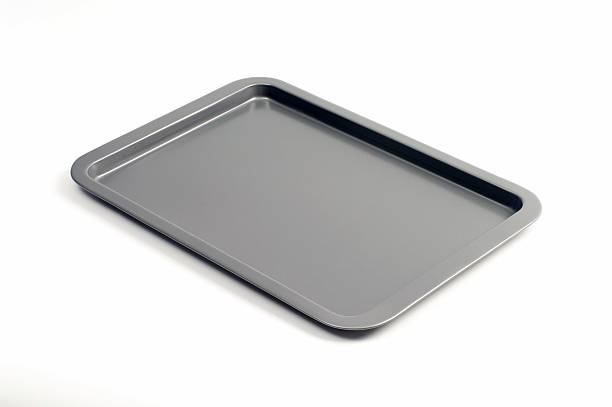
How To Clean Baking Sheets
Cleaning baking sheets can be a chore, especially when they’re covered in stubborn grease and baked-on food residue. However, with the right techniques, you can restore your baking sheets to their former glory. Here are six effective ways to clean baking sheets:
1. Baking Soda And Boiling Water
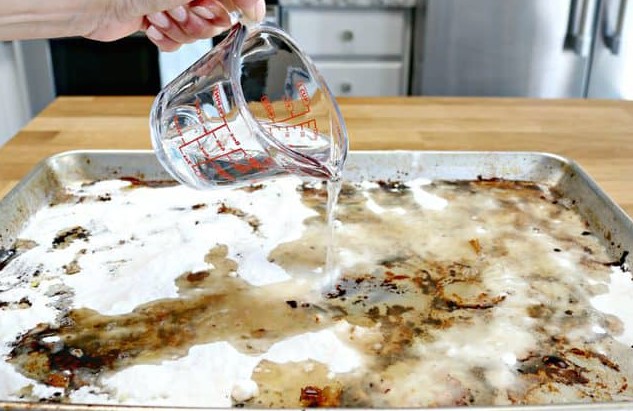
Baking soda and boiling water form a dynamic duo when it comes to cleaning various surfaces, including baking sheets. The combination leverages the powerful cleaning properties of baking soda, known for its ability to lift and dissolve grease and grime, and the heat of boiling water to help loosen stubborn residue.
When using this method to clean baking sheets, one typically starts by sprinkling baking soda over the affected areas, followed by pouring boiling water over the baking soda. This creates a bubbling reaction that helps to break down tough stains and baked-on food particles.
After allowing the solution to sit for a short period, the baking sheet can be scrubbed with a brush or sponge to further loosen any remaining residue.
Finally, a thorough rinse and drying complete the process, leaving the baking sheet clean and ready for future use. This simple yet effective technique offers a natural and budget-friendly solution for maintaining pristine baking equipment.
2. Baking Soda And Vinegar
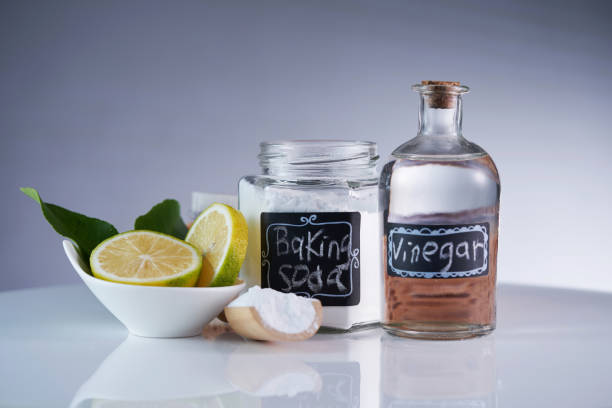
Baking soda and vinegar are two household staples that, when combined, create a powerful cleaning agent capable of tackling various cleaning challenges, including dirty baking sheets.
The chemical reaction between these two ingredients produces carbon dioxide bubbles, which help to lift and loosen stubborn stains and grease. To clean a baking sheet using baking soda and vinegar, start by sprinkling a generous amount of baking soda over the surface of the sheet.
Then, carefully pour vinegar over the baking soda, allowing the mixture to foam and fizz as it reacts. Let the solution sit for a few minutes to work its magic before using a scrubbing brush or sponge to agitate the grime.
The abrasive action, combined with the cleaning properties of the baking soda and vinegar, effectively breaks down and removes tough residue. After scrubbing, rinse the baking sheet thoroughly with water and dry it with a clean towel.
This eco-friendly and inexpensive method offers a natural alternative to harsh chemical cleaners, leaving your baking sheets clean and ready for your next culinary adventure.
3. Baking Soda And Hydrogen Peroxide
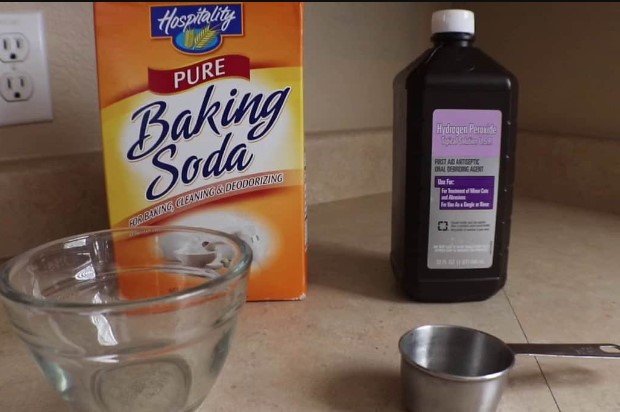
Baking soda and hydrogen peroxide make a formidable team when it comes to cleaning and brightening baking sheets. The combination of these two household staples creates a potent cleaning solution that effectively removes tough stains and baked-on residues.
To clean a baking sheet using baking soda and hydrogen peroxide, begin by sprinkling a layer of baking soda evenly over the surface of the sheet. Then, pour hydrogen peroxide over the baking soda, creating a paste-like consistency.
Allow the mixture to sit on the baking sheet for several minutes, allowing the bubbling action to help loosen dirt and grime. Afterward, use a scrubbing brush or sponge to work the paste into the surface of the baking sheet, targeting any stubborn areas.
Rinse the baking sheet thoroughly with water and dry it with a clean towel. This natural and chemical-free cleaning method leaves baking sheets sparkling clean and ready for their next use, without the need for harsh chemicals.
4. Lemon Juice And Aluminum Foil
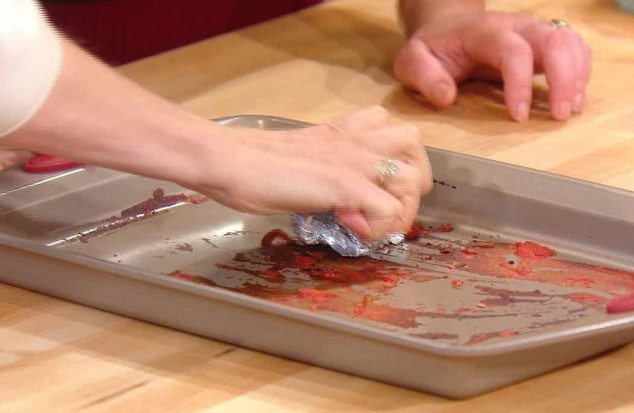
Lemon juice and aluminum foil offer a natural and effective solution for cleaning baking sheets, especially when dealing with tough stains and burnt-on residue.
The acidic properties of lemon juice help to break down grease and grime, while the abrasive texture of aluminum foil aids in scrubbing away stubborn particles.
To clean a baking sheet using this method, begin by squeezing fresh lemon juice onto the surface of the sheet, ensuring thorough coverage. Next, crumple a sheet of aluminum foil into a ball and use it to scrub the baking sheet, focusing on areas with the most buildup.
The combination of lemon juice and the abrasive foil helps to lift and remove stubborn stains, leaving the baking sheet looking clean and refreshed. After scrubbing, rinse the baking sheet with water and dry it with a clean towel.
This eco-friendly cleaning technique not only restores the shine to baking sheets but also leaves behind a fresh citrus scent.
5. Tomatoes And Salt
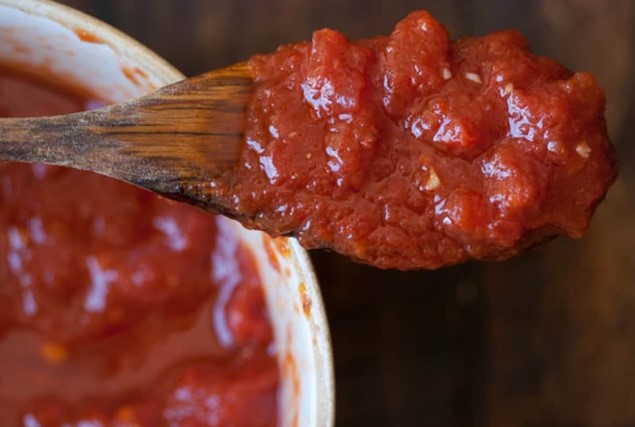
Using tomatoes and salt is an unconventional yet surprisingly effective method for cleaning baking sheets, particularly when dealing with stubborn stains and baked-on residues.
Tomatoes contain natural acids and enzymes that help break down grease and grime, while salt acts as an abrasive agent to scrub away residue. To clean a baking sheet using this method, start by slicing a ripe tomato in half and sprinkling salt generously over the cut side.
Then, use the tomato halves to scrub the surface of the baking sheet, focusing on areas with the most buildup. The acidity of the tomato combined with the abrasiveness of the salt helps to lift and loosen stubborn stains, making them easier to remove.
After scrubbing, rinse the baking sheet thoroughly with water and dry it with a clean towel. This natural cleaning method not only effectively removes dirt and grime but also leaves behind a fresh scent, making it an excellent option for eco-conscious individuals looking for a chemical-free cleaning solution.
6. Scouring Pad And Sparkling Water
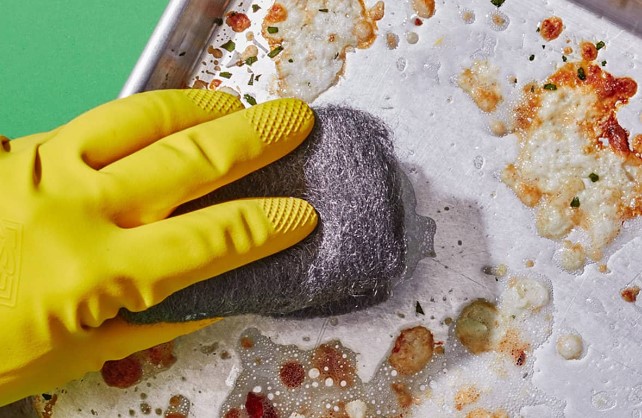
Using a scouring pad and sparkling water is a straightforward and effective method for cleaning baking sheets, particularly when dealing with light to moderate stains and residues.
Sparkling water, with its carbonation, acts as a mild abrasive agent while also providing a gentle cleaning action. To clean a baking sheet using this method, first, pour sparkling water onto the surface of the sheet, ensuring thorough coverage.
Then, use a scouring pad to gently scrub the baking sheet, focusing on areas with stains or residues. The combination of the carbonation in the sparkling water and the abrasive texture of the scouring pad helps to lift and loosen dirt and grime, making them easier to remove.
After scrubbing, rinse the baking sheet with water and dry it with a clean towel. This simple and natural cleaning method is ideal for regular maintenance and leaves baking sheets looking clean and shiny without the need for harsh chemicals.
4 Tips For Maintaining Your Baking Sheets
Maintaining your baking sheets properly can extend their lifespan and ensure they remain in good condition for years to come. Here are three essential tips for keeping your baking sheets in top shape:
Use Parchment Paper
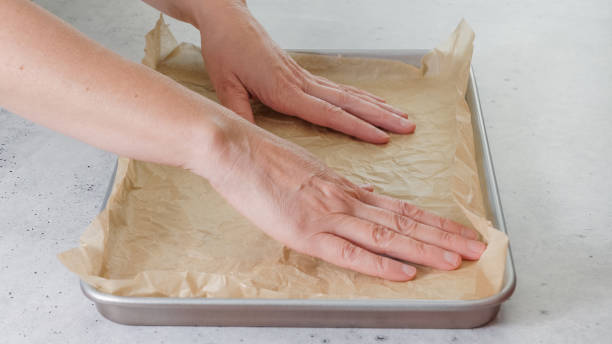
Using parchment paper is a simple yet effective way to maintain your baking sheets and streamline your baking process.
By lining your baking sheets with parchment paper before placing food on them, you create a protective barrier that minimizes direct contact between the food and the sheet.
This not only prevents sticking and reduces the need for greasing but also makes cleanup a breeze, as you can simply discard the parchment paper after use. Moreover, parchment paper helps to preserve the integrity of your baking sheets by preventing stains and scratches, ultimately extending their lifespan.
Incorporating parchment paper into your baking routine is a convenient and practical strategy for keeping your baking sheets in top condition.
Avoid Using Oil
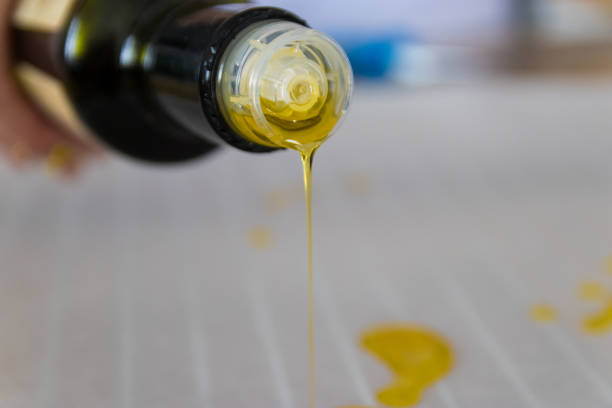
Avoiding the use of oil on your baking sheets can significantly contribute to their maintenance and longevity.
While it might be tempting to apply oil to prevent sticking, especially with recipes that call for it, this practice can lead to residue buildup and eventually cause your baking sheets to become greasy and difficult to clean.
Instead, opt for alternative methods such as lining the sheets with parchment paper or silicone baking mats to prevent sticking without the need for oil.
By avoiding oil, you can keep your baking sheets cleaner and in better condition for longer, ensuring they continue to deliver excellent results with each use.
Avoid Harsh Cleaners and Abrasive
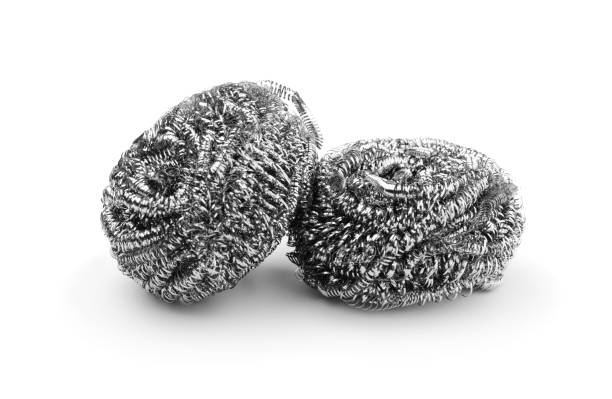
Avoiding harsh cleaners and abrasive scrubbers is essential for maintaining the quality and condition of your baking sheets.
Harsh cleaners and abrasive materials can strip away the protective coating on nonstick sheets or cause scratches and damage to aluminum sheets, compromising their performance and lifespan.
Instead, opt for gentler cleaning solutions such as mild dish soap, baking soda, or vinegar, which effectively remove food residues and stains without causing harm to the surface of the baking sheets.
When cleaning, use soft sponges or cloths to avoid scratching, and always rinse thoroughly with water afterward. By avoiding harsh cleaners and abrasives, you can ensure that your baking sheets remain in optimal condition, allowing you to enjoy hassle-free baking for years to come.
Wash Them Regularly After Every Use
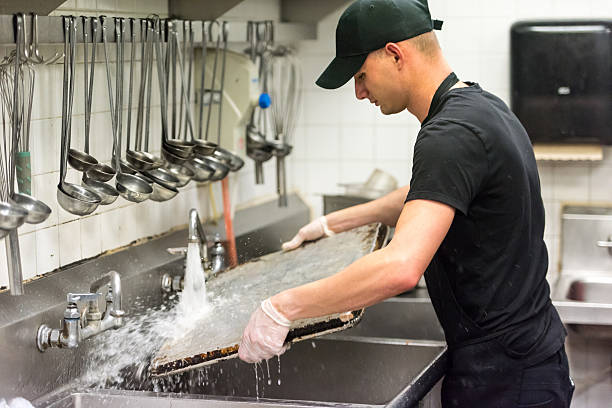
Washing your baking sheets regularly after every use is a fundamental practice for maintaining their cleanliness and condition.
Leaving food residues and grease on baking sheets can lead to buildup over time, making them more challenging to clean and potentially affecting the taste and quality of your baked goods.
After each use, promptly wash your baking sheets with warm water and mild dish soap, using a sponge or soft cloth to remove any leftover food particles. Pay extra attention to any stubborn stains or residues, using gentle cleaning methods such as baking soda or vinegar if necessary.
Thoroughly rinse the sheets with clean water and dry them completely before storing to prevent rusting or corrosion. By washing your baking sheets promptly after each use, you can keep them in excellent condition and ensure they’re ready for your next baking adventure.
Things To Know About Baking Sheets
Baking sheets are essential tools in the kitchen for baking a variety of delicious treats, but there are several important things to know about them to ensure you get the best results:
Material
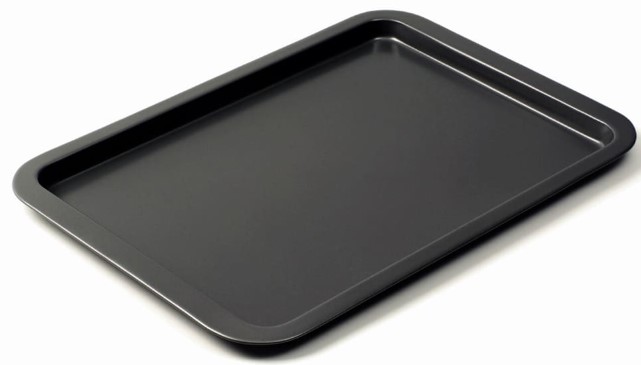
Baking sheets, also known as baking pans or cookie sheets, come in various materials, each with its own unique properties and advantages.
Aluminum is one of the most common materials used for baking sheets due to its excellent heat conductivity, which ensures even baking and browning of food.
Aluminum baking sheets are lightweight, durable, and resistant to rust and corrosion, making them suitable for a wide range of baking tasks. Stainless steel baking sheets are also popular for their durability and resistance to stains and odors.
They are easy to clean and maintain, although they may not conduct heat as efficiently as aluminum sheets. Nonstick baking sheets feature a coating that prevents food from sticking, making cleanup a breeze, but they require gentle handling to avoid scratching or peeling of the coating.
Silicone baking mats are another option, providing a nonstick surface for baking while also offering the flexibility to be used for rolling dough or as a liner for other baking pans. Overall, the choice of material for baking sheets depends on personal preference, baking needs, and budget considerations.
Size and Thickness
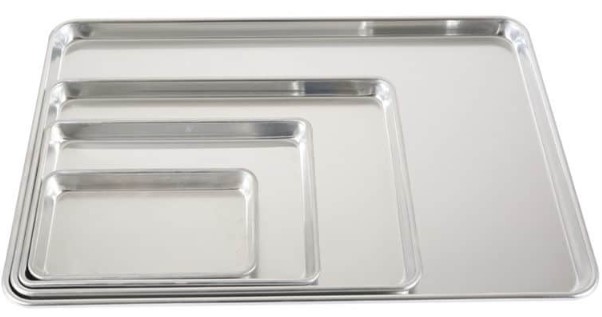
Baking sheets come in a variety of sizes and thicknesses, each serving different purposes in the kitchen. Common sizes include half-sheet pans (18×13 inches) and quarter-sheet pans (13×9 inches), but there are also smaller and larger options available to accommodate various baking needs.
The size of the baking sheet you choose depends on the quantity of food you typically bake and the size of your oven. Thicker baking sheets tend to be more durable and less prone to warping, providing better heat distribution and more even baking.
They are particularly useful for heavy-duty baking tasks such as roasting vegetables or baking multiple batches of cookies. However, thinner baking sheets can also be effective for lighter baking tasks and may be more affordable.
Ultimately, the size and thickness of the baking sheet you select should align with your specific baking preferences and requirements.
The Shape Of Baking Sheets
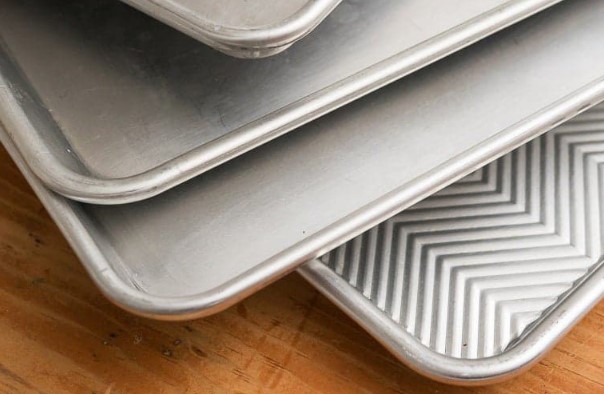
Baking sheets come in various shapes to suit different baking needs and preferences. The most common shape is rectangular, with straight edges and a flat surface, making them versatile for baking cookies, roasting vegetables, and other oven-based cooking tasks.
However, there are also specialized shapes available, such as round baking sheets for pizza or tart crusts, square baking sheets for brownies or bars, and even novelty shapes for themed baking projects.
The shape of the baking sheet you choose depends on the type of baked goods you frequently make and the presentation you desire. Additionally, some baking sheets feature rims or edges, which can help contain liquids or prevent food from sliding off during baking.
Ultimately, selecting the right shape of baking sheet can enhance both the baking experience and the final presentation of your creations.
Color Of Baking Sheets
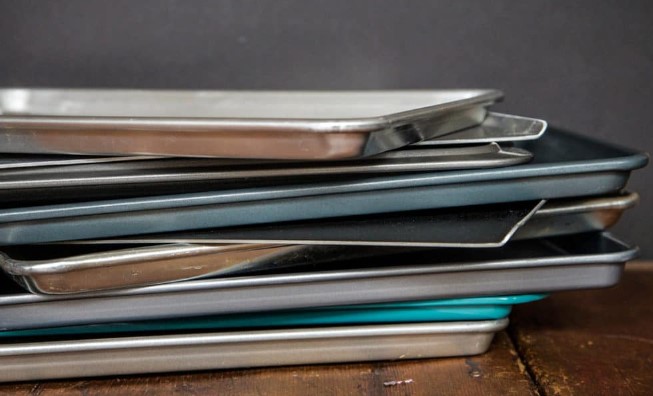
The color of baking sheets can vary, with some being light in color and others darker. Light-colored baking sheets, often made of aluminum, are preferred by many bakers for their ability to reflect heat more efficiently, resulting in more evenly baked goods with golden brown bottoms.
These sheets are ideal for delicate pastries, cookies, and cakes where precise heat distribution is crucial. On the other hand, darker-colored baking sheets, often made of steel or coated with nonstick materials, absorb more heat and may result in faster browning.
They are often favored for recipes that require more browning, such as roasted vegetables or meats. However, it’s essential to note that darker-colored sheets can sometimes lead to overbaked or burned bottoms if not monitored closely.
Ultimately, the choice of baking sheet color depends on personal preference, baking habits, and the specific recipe being prepared.
Frequently Asked Questions (FAQs) – How To Clean Baking Sheets
Q: Why is it important to keep my baking sheets clean?
A: Keeping your baking sheets clean not only ensures better-tasting baked goods but also extends their lifespan. Plus, a clean baking sheet makes for effortless baking and easy cleanup!
Q: What’s the best way to remove baked-on grease and residue from my baking sheets?
A: Fear not! A simple combination of baking soda and vinegar can work wonders. Sprinkle baking soda, add a little vinegar, let it fizz, then scrub with a non-abrasive sponge. Your baking sheets will sparkle like new!
Q: Can I use natural ingredients to clean my baking sheets?
A: Absolutely! Lemon juice and salt make a fantastic natural cleaning duo. Squeeze fresh lemon juice onto your baking sheet, sprinkle salt over it, and scrub away. It’s effective, eco-friendly, and leaves a refreshing citrus scent!
Q: How can I maintain the shine on my baking sheets without harsh chemicals?
A: Opt for a gentle yet powerful solution: a mixture of hydrogen peroxide and cream of tartar. Spread the paste over your baking sheet, let it sit for a while, then wipe clean. Your baking sheets will gleam without the use of any harsh chemicals!
Q: What’s a quick and easy way to prevent future stains on my baking sheets?
A: Prevention is key! Line your baking sheets with parchment paper or silicone baking mats before use. This not only reduces cleanup time but also keeps your baking sheets looking pristine for longer periods.
Q: Are there any alternative methods for cleaning baking sheets?
A: Of course! For a hands-off approach, try soaking your baking sheets in a mixture of hot water and dish soap. Let them sit for a few hours or overnight, then scrub gently for effortless cleaning. It’s a hassle-free way to restore your baking sheets’ shine!
Q: How often should I clean my baking sheets?
A: Aim to clean your baking sheets after each use to prevent buildup. However, if they’ve accumulated stubborn stains, a deep clean every few weeks will keep them in top condition. With regular maintenance, your baking sheets will remain spotless and ready for any culinary adventure!
Conclusion
In conclusion, maintaining clean baking sheets is essential for ensuring optimal baking results and prolonging the lifespan of your bakeware.
By following the simple yet effective methods outlined in this guide, you can easily remove stubborn stains, grease, and baked-on residue from your baking sheets.
Whether utilizing natural ingredients or specialty cleaners, regular cleaning practices will not only enhance the appearance of your bakeware but also contribute to the overall hygiene of your kitchen.
Remember, a clean baking sheet is the foundation for achieving delicious baked goods, making the investment of time and effort in cleaning well worth it.
So, incorporate these tips into your kitchen routine and enjoy the satisfaction of pristine baking sheets and mouthwatering treats for years to come.
Other Articles You May Also Like: